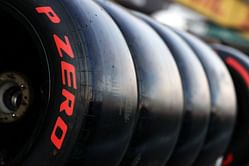The halo is a driver crash-protection system used in the open-wheel racing series, which consists of a curved bar placed to protect the driver's head. HALO cockpits made their Formula One debut in the F1 Australian Grand Prix 2018 at Albert Park circuit Melbourne. Halo’s introduction is part of the steps taken to improve driver safety after the tragic death of Jules Bianchi.

Construction
The Halo-system consists of a bar that surrounds the driver’s head and is connected by three points to the vehicle frame. The Halo is made of titanium and weighed around 7 kgs in the version presented in 2016 and then rose to 9kgs in 2017. The system is manufactured by external manufacturers chosen by the FIA and has the same specification for all vehicles. According to an FIA simulation, the survival rate increases by 17% by the use of this system.

Development
For the development of Halo, three fundamental scenarios were considered-collision between two vehicles, contact between a vehicle and the surrounding environment (such as barriers), and collisions with vehicles and debris.
According to tests, Halo can significantly reduce the risk of injury to the driver and in many cases, the system was able to prevent the helmet from coming into contact with the barrier.
Alternative Proposal
An alternative proposal was developed by Red Bull that featured the “aeroscreen”. The design however did not receive much interest from FIA.
Initial reception
Initially, the system received a lot of criticism because of a lack of visual appeal and because it obstructs the driver’s vision. However other former drivers like Jackie Stewart welcomed the system as it proved to enhance driver safety.
Despite initial criticism, Halo has gained supporters since then as it has played a role in driver safety in two crucial incidents, One in Formula 2 race in Spain, where Tadasuke Makino’s halo was landed on by fellow countryman Nirei Fukuzumi’s car and the second incident took place in Formula One in the Belgian Grand Prix where Charles Leclerc and Fernando Alonso collided.
The halo was credited with saving the life of Alex Peroni after his vehicle became airborne and crashed in an F3 event. It also saved Romain Grosjean at the 2020 Bahrain Grand Prix where he crashed into the barrier. The halo hit the upper section of the barrier, protecting Grosjean's head from the impact. Despite initial concerns over drivers' ability to evacuate quickly being impaired by the halo, Grosjean was able to climb out almost instantly. After emerging from the crash, Grojean said, "I wasn't for the halo some years ago, but I think it's the greatest thing that we've brought to Formula 1, and without it I wouldn't be able to speak with you today," Grosjean said from his hospital bed afterward.
Despite initial concerns surrounding Halo’s visual appeal, the device has been received the nod from almost every paddock expert after its proven safety benefits.










